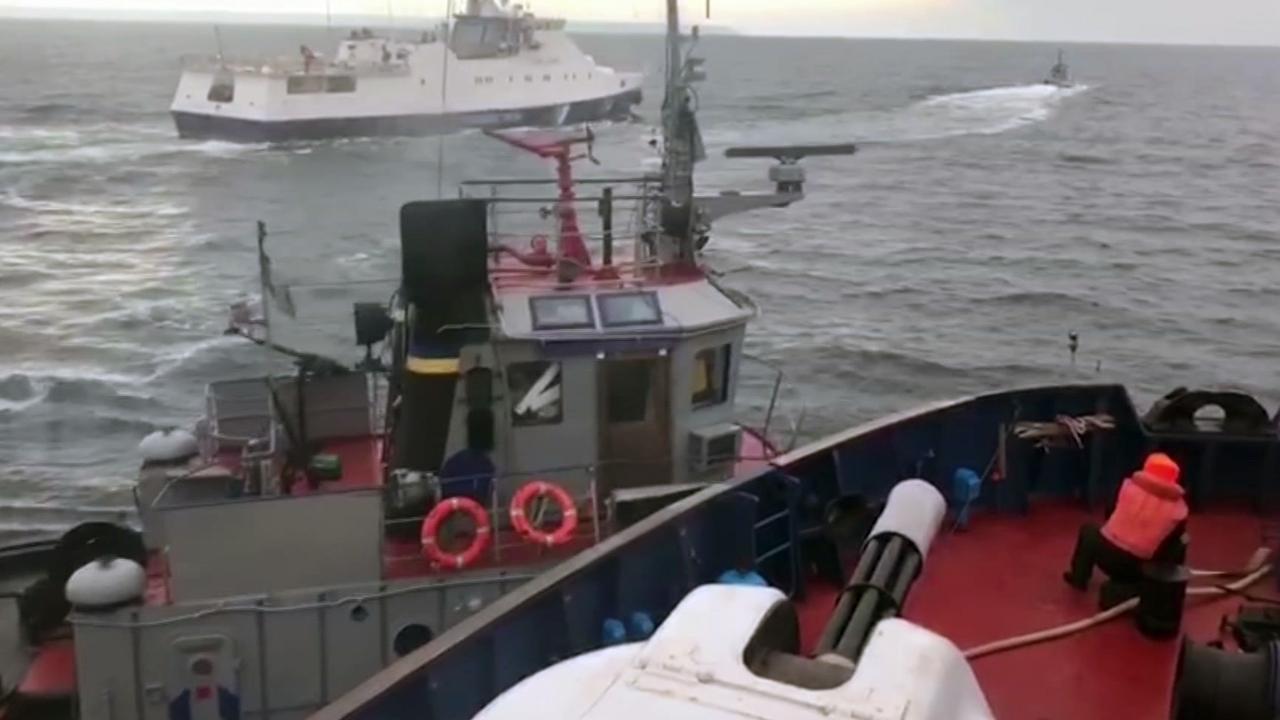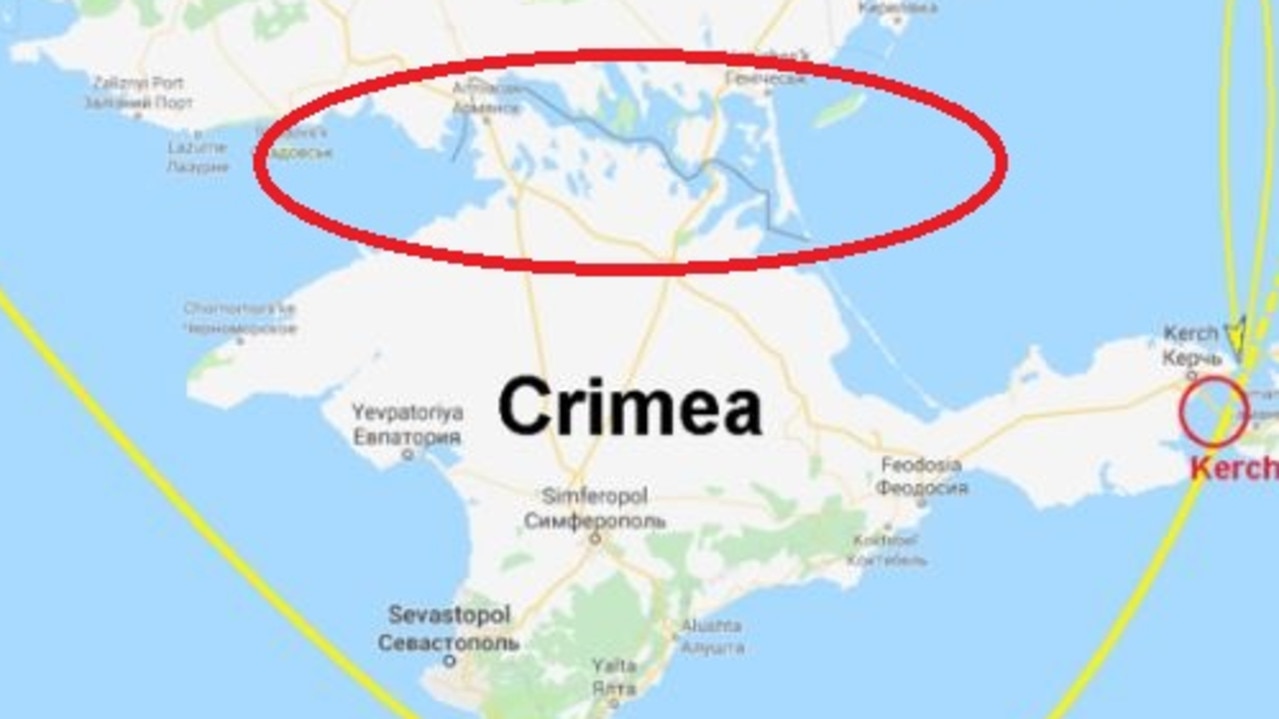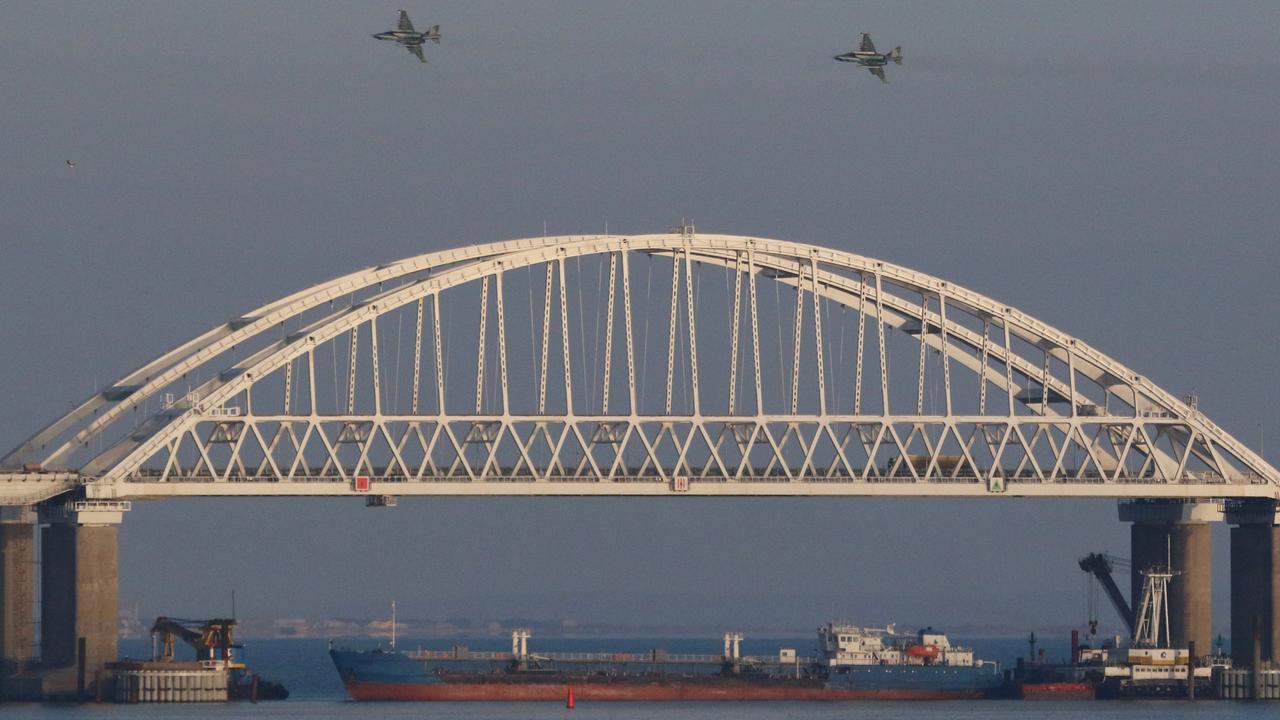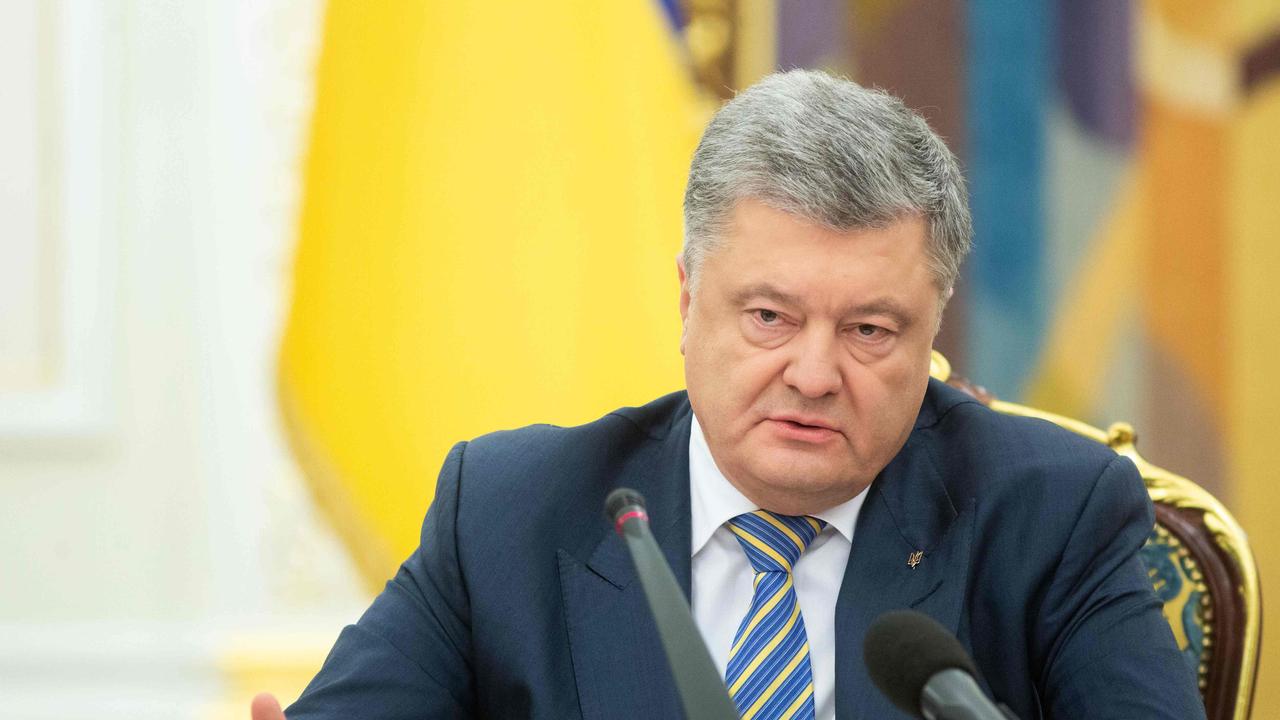Solid or dashed? How Google shows the Crimea border depends on where you live
There are ominous signs of war as tensions grow between these two countries. A seemingly insignificant Google Maps image shows why.
It’s all getting very tense in the waters of the Sea of Azov.
Russia has dismissed its blocking of the international waterway, impounding of several Ukrainian ships and imprisonment of their crews as a mere “minor skirmish” due to “bandit methods” and has said the whole episode is a ploy by Ukraine’s president to bolster his election prospects.
But the pressure on Moscow is tightening with the US and EU calling out Russia’s actions — close to the shores of the disputed territory of Crimea — as “dangerous” and “a provocation”.
In a dramatic video alleged to be of the incident, a Russian warship is seen ramming a Ukrainian tug with the captain shouting “squash them”. It’s led Ukraine’s President Petro Poroshenko to instigate martial law because, he said, there was now the “serious threat” of a ground invasion.

Russia Today (RT), a global TV news channel which is widely seen as a mouthpiece of the Kremlin, said in an editorial the incident that saw Russian border guards open fire on and then seize three Ukrainian naval vessels in the Kerch Strait (between the Azov and Black seas) was possibly being engineered from Kiev.
“The standoff between the Ukrainian and Russian ships could have been a planned provocation — a domestic ploy aimed at swinging a potentially unwinnable election,” it said.
Russian Foreign Ministry spokeswoman Maria Zakharova said Ukraine had resorted to “bandit methods” toward Russia — claims Ukraine has denied.
SOLID LINE OR DASHED LINE?
But it’s a subtle sign on a map accompanying the RT article which shows that, as far as Russia is concerned, there is no doubt about who that stretch of water belongs to.
RT used a map by US IT giant Google as the bias for a graphic on the movements of the Ukrainian ships.
Crimea, a Ukrainian territory Russia took control of in 2014, is in the centre of the map. The vast majority of countries still recognise Crimea as part of Ukraine.
Look at the Google map used by RT and where the Crimean region meets the Ukrainian mainland you’ll see a solid grey line dividing the two.
But if you type Crimea into Google maps that divide is not a solid, but a dashed line.


So what’s the difference between a solid and dashed line? A massive amount.
The former denotes an international boundary — say between the US and Canada; the latter a disputed border, an example being the border between Israel and Palestine where dashed lines dance around one another on the tight streets of contested Jerusalem.
Almost everywhere in the globe, Google graphically shows Crimea as a dashed line and thus, at least arguably, a region of Ukraine.
However, this isn’t a bit of sneaky photoshopping by RT. Rather, if you are in Russia and look up Crimea Google indeed shows the border as solid. This means either side of the Kerch Strait is depicted by Google in Russia as being undoubtedly Russian.
To RT’s audience, Google’s map subtly backs up Moscow’s claims that Ukraine was trespassing on its turf.
Google’s rather grandly titled “geospatial technologist” Ed Parsons said disputed borders are a minefield to map.
“I guess, naively perhaps, we hoped we could have one global map of the world that everyone used, but politics is complicated,” Mr Parsons told the Independent in 2014.
Indeed, Indian authorities were set to fine Google for even referring to the boundary in the Kashmir region, parts of which Pakistan and China claim, as disputed. Search for Kashmir in Google Maps in India and you’ll also find a solid boundary line.

CHOKE POINT
Ever since Russia annexed Crimea the Kerch Strait choke point has worried Kiev. Ukraine’s port of Mariupol lies on the Sea of Azov. The only way out from that body of water, and eventually the ocean, is through the strait.
Even worse for Ukraine, Russia’s recently built Crimean bridge which crosses the strait, effectively creates a barrier with only a few routes through for ships.
A single tanker placed beneath the bridge was enough to block Ukraine’s boats from getting through.
RT reported that while both Russia and Ukraine have “freedom of navigation” through the strait, there are strings attached to this freedom.
“There are detailed technical rules on how vessels should pass through. All traffic in the area is controlled by the Crimean (read, Russian) sea port of Kerch, and every ship should contact the facility, report her route and destination, and receive permission to sail through the Strait.”
Despite Kiev’s statement to the contrary, Moscow is adamant the vessels tried to barge their way through and so breached its “maritime border”, a border Ukraine doesn’t recognise.

RUSSIA’S OTHER THEORY
RT pondered if Kiev’s imposition of 30 days of martial law in some regions had an ulterior motive.
“It is a well-known fact that being in a state of war helps engender support for the powers that be as they vow to protect the country from outside threats.”
Martial law, it said, could allow Mr Poroshenko to close down TV stations critical of Kiev. This observation seems pretty rich coming form a country that is ranked in the bottom fifth of nations in terms of freedom of the press while RT itself is often chided as being little more than Vladimir Putin’s global microphone.
Mr Poroshenko has insisted martial law will not erode civil liberties.
Ukraine has the international community on its side. US Secretary of State Mike Pompeo called Russia’s actions “a dangerous escalation and a violation of international law”.
“We call on Russia to return to Ukraine its vessels and detained crew members, and to respect Ukraine’s sovereignty and territorial integrity.”
European Union President Donald Tusk said: “I condemn Russian use of force in Azov Sea”.
The international community is desperate to put the lid on the latest fight between the two former Soviet nations. Mr Poroshenko said the two sides never stopped fighting.
“Russia has been waging a hybrid war against our country for five years,” he said on Monday.
“But with an attack on Ukrainian military boats it moved to a new stage of aggression.”
He said there was now “an extremely serious threat of a land-based operation against Ukraine.”




